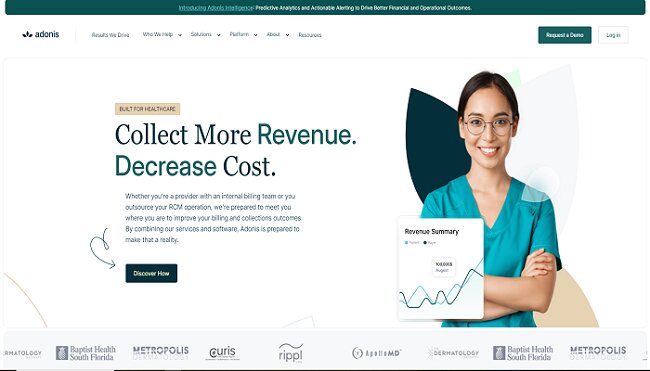Ever felt like managing the financial side of a healthcare practice is a rollercoaster?
You’re not alone.
There’s a lot between ensuring accurate bills and dealing with complex regulations.
But here’s the kicker: advanced billing systems and staying on top of legal compliance can make that rollercoaster smooth.
Let’s explore how integrating tech-savvy solutions with a solid understanding of the law can make a world of difference in healthcare RCM.
Understanding Revenue Cycle Management in Healthcare
RCM is the backbone of the financial side of healthcare.
It’s the journey from when a patient makes an appointment to when the payment is fully processed. Sounds straightforward.
But with various steps like billing, coding, and dealing with insurance companies, it’s anything but simple.
Challenges like claim denials and billing errors are more common than we’d like, often leading to headaches for providers and patients.
Diving deeper into the essence of Revenue Cycle Management (RCM) in healthcare, imagine it as the circulatory system of your practice’s finances.
Just like the heart pumps blood to sustain life, RCM pumps financial resources to keep the healthcare facility thriving.
Every step, from the moment a patient walks in with a need to the final satisfaction of that need being financially settled, is crucial. Mistakes or inefficiencies in this process can lead to financial losses, much like a block in a blood vessel can lead to health issues.
Effective RCM ensures a smooth flow, from accurate coding and billing to dealing with insurance claims and collecting patient payments without delay. It’s about creating a seamless experience not just for patients but for providers and staff, ensuring that the facility’s financial health is always in peak condition.
This holistic view is essential for anyone involved in healthcare management to understand and optimize for the benefit of all parties involved.
The Role of Advanced Billing Systems
Enter advanced billing systems, the superheroes of the healthcare financial world.
These systems are like having a super-smart assistant who ensures everything’s billed correctly, codes are up to date, and payments are processed efficiently.
They can dramatically reduce errors, speed up the process, and even give you real-time insights into how your practice is doing financially.
And when systems like Adonis medical billing come into play, you’re not just getting efficiency but setting a new standard for how healthcare can manage its finances.
Diving deeper into the role of advanced billing systems, imagine a world where errors in billing are significantly reduced, not by chance, but by design.

These systems are not just about automating tedious tasks; they’re about bringing intelligence to the financial operations of healthcare.
With features like automated claim submissions and real-time eligibility checks, they cut through the complexity that traditionally bogs down the billing process. It’s like having a financial wizard at your fingertips, one that understands the nuances of healthcare billing codes can predict common pitfalls, and offers solutions before problems escalate.
These systems provide actionable insights by leveraging data analytics, allowing healthcare providers to make informed decisions directly impacting their revenue stream.
In essence, advanced billing systems are transforming the financial landscape of healthcare, making it more efficient, accurate, and ultimately, more patient-centric.
Legal Compliance: Navigating Healthcare Regulations
Now, let’s talk about the legal maze known as healthcare regulations. Staying compliant isn’t just about avoiding fines (though that’s pretty important); it’s about ensuring patient privacy and trust.
Regulations like HIPAA and the Affordable Care Act constantly evolve, and keeping up can feel like a full-time job.
That’s where companies like The Simon Law step in, offering a roadmap to navigate these complex regulations while keeping your practice on the right side of the law.
Integrating Billing Systems with Legal Compliance Strategies
How do we combine advanced billing systems and legal compliance in a way that makes sense?
It’s all about integration.
When your billing system is designed with compliance in mind, like ensuring patient data is secure and billing practices meet legal standards, you’re not just avoiding penalties; you’re streamlining your entire RCM process.
This integration means less time worrying about whether you’re compliant and more time focusing on what matters most: your patients.
Best Practices for Implementing Integrated Solutions
If you’re thinking, “This sounds great, but where do I start?” don’t worry. The first step is assessing your current system and identifying where to improve.
Look for billing solutions that offer scalability, integration with your existing EHR, and robust security features. And don’t forget about training your team.
A new system is only as good as those using it, so investing in comprehensive training is key.
Continuing under the umbrella of best practices for implementing integrated solutions, let’s dive a little deeper. Beyond just picking the right system and training your team, there’s a crucial aspect of communication.
Keeping open lines of communication with your technology providers ensures that any hiccups can be addressed swiftly.

Think of them as part of your extended team, ready to help optimize your practice’s operations.
Another key practice is to actively engage with your staff during the transition. Change can be tough, especially when it involves complex systems that staff use daily.
Set up a feedback loop where employees can share their experiences, challenges, and suggestions. This helps fine-tune the system and fosters a culture of continuous improvement and team collaboration.
Lastly, don’t overlook the importance of patient education. As you implement new billing systems, ensure your patients understand how these changes benefit them, from clearer billing statements to more secure handling of their personal information.
Transparent communication can significantly enhance patient trust and satisfaction, making them feel more connected and supportive of your practice’s advancements.
By focusing on these areas—partnership with providers, staff engagement, and patient education—you create a robust ecosystem around your new billing and compliance systems. This holistic approach smooths out the implementation process and sets the stage for long-term success and sustainability in the ever-evolving healthcare landscape.
Wrapping Up
Navigating the financial aspects of healthcare can be daunting, but with the right tools and knowledge, it doesn’t have to be. By embracing advanced billing systems and ensuring your practices are legally compliant, you’re setting your healthcare facility up for success.
And remember, it’s not just about the bottom line; it’s about providing the best care possible by keeping your focus where it belongs—on your patients.
So, take the leap, and see how these changes can positively impact your practice and your patients’ lives.
Remember, managing the financial health of your healthcare practice is just as important as managing the health of your patients.
You can ensure that both are cared for seamlessly with the right approach and tools.


















